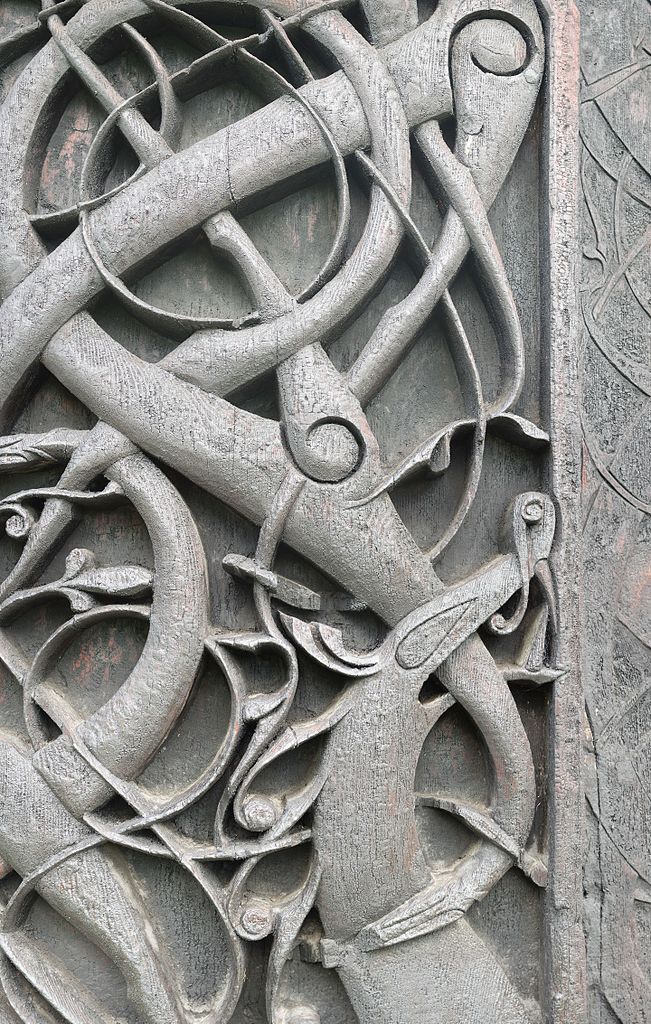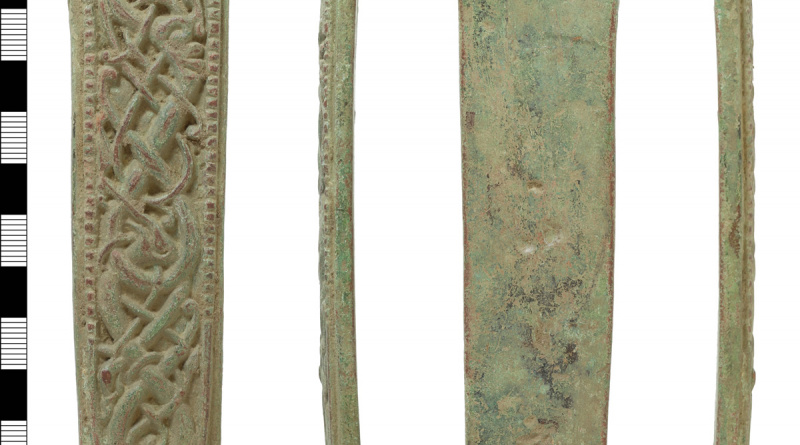11th Century Die Stamp
This copper-alloy object has been designated a Find of Note of National Importance.
Urness style
It has a high-relief decoration depicting two animals interlaced in Urnes (or Runestone) style.

This style takes its name from the carved wooden doors of the stave church as Urnes in Norway.
It features slender curvaceous animals with large almond-shaped eyes that are interwoven into tight patterns.
It is the last phase of Viking Art and dates from around the second half of the 11th century to the early 12th century. This implies a similar dating for this find.
Die stamp
The PAS record suggests that the solidity of the object, from its 7mm thickness, supports the theory that it was used as a die. It describes how “Dies were used to make stamped foils, for use as components of composite objects. The foils were made by placing the die on a firm surface (such as an anvil), laying the foil on top, and covering it with a flexible upper (such as lead or textile) which was then hammered to push the foil into the recesses of the relief on the die“.
As the PAS record notes, there are two issues with this theory. First, there are no surviving products from this or similar items ( there are from 6th and 7th century dies). Second, the object is slightly convex which would make it difficult to keep stable as it is being hammered.

